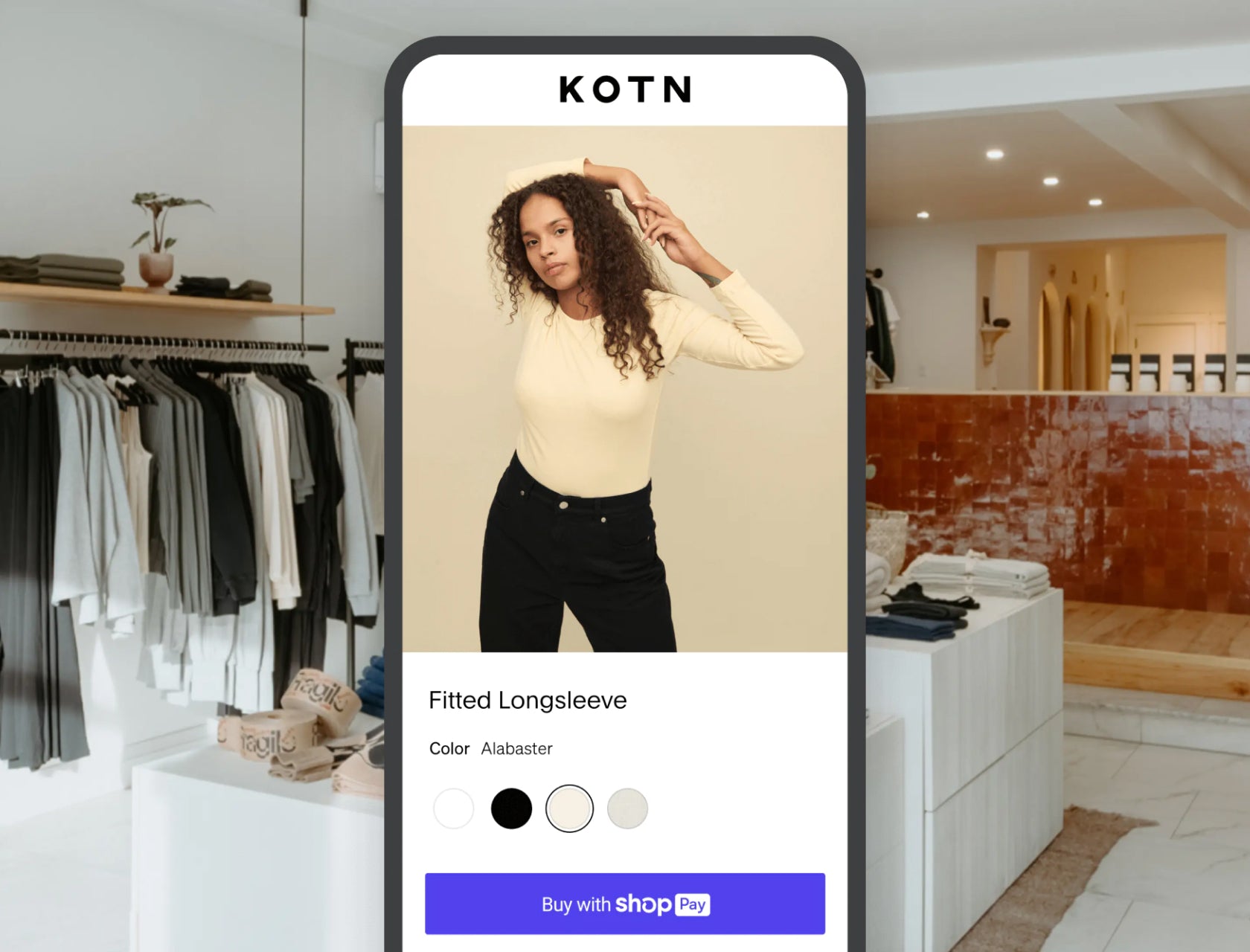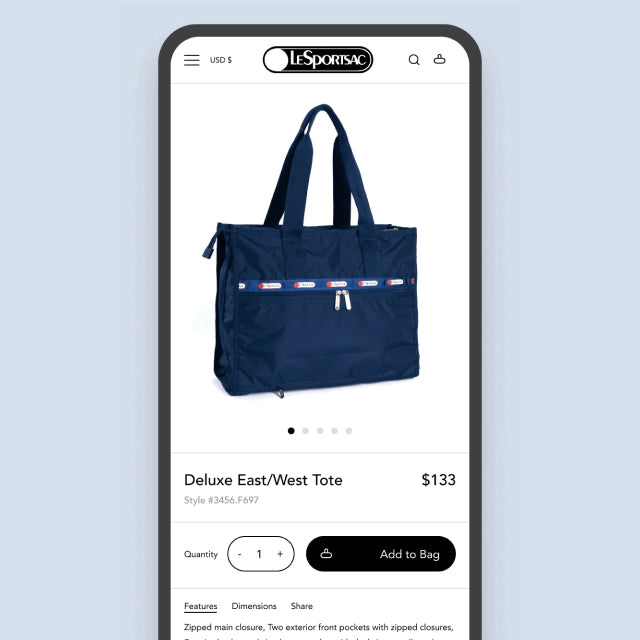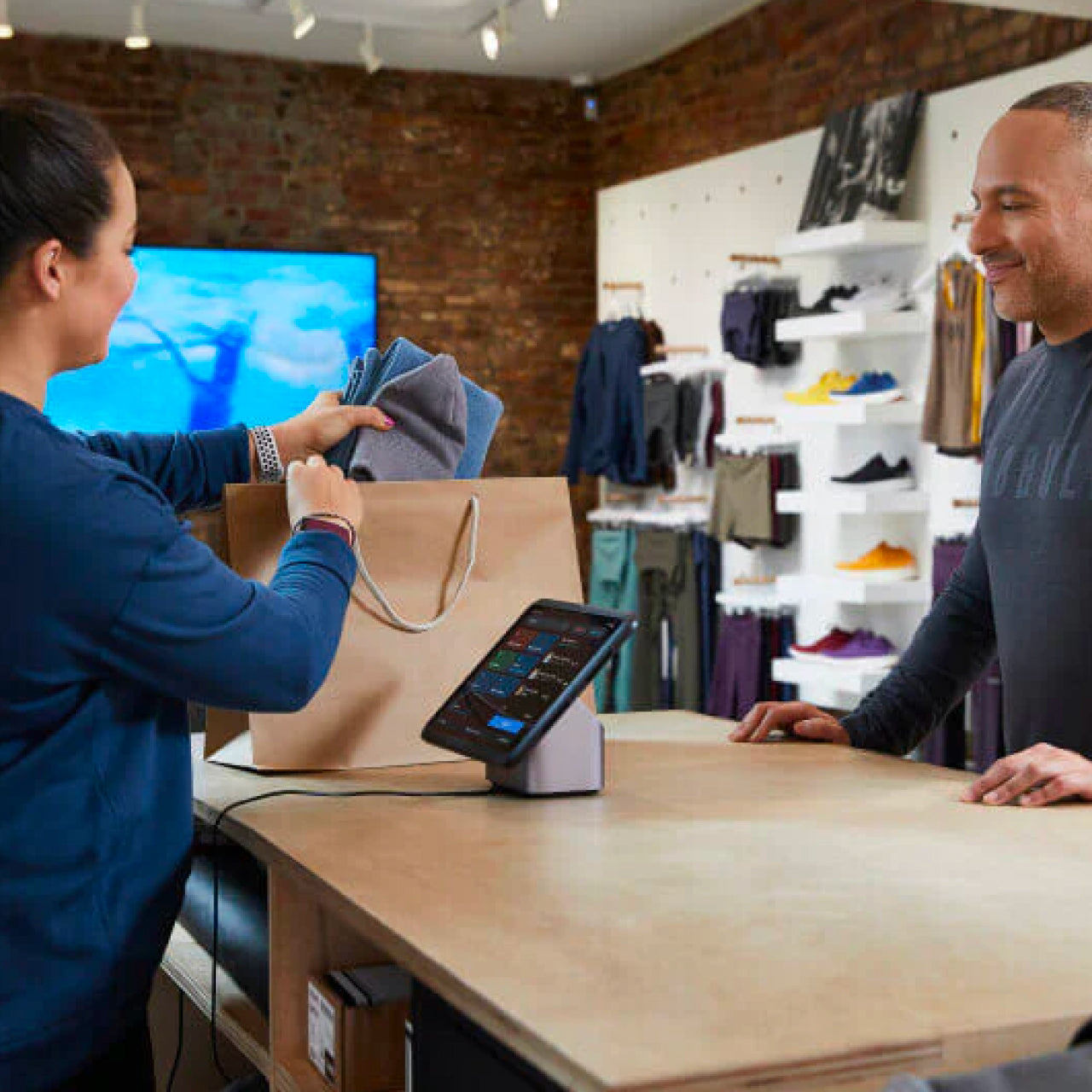Omnichannel commerce
More channels, more shoppers, more sales

Responsive online store
Convert customers on any device
Responsive Shopify themes
Shopify Plus Partners for custom themes
Global payment providers
Faster checkout with Shop Pay


The flexibility Shopify Plus provides across mobile, desktop, and third-party apps has allowed Brooklinen to grow from a Kickstarter campaign to the largest bedding brand in the D2C space.
Social media and marketplaces
Turn followers into brand evangelists


It was the perfect combination of bringing all our channels together, as well as the cost being exactly what we needed.
Find out how LeSportsac grew orders by 37% through omnichannel commerce
Your customers aren’t on one channel—they’re on all of them
of shoppers use multiple channels before making a purchase
increase in revenue when brands sell on more than one channel
Blur the line between online and offline retail with Shopify POS

Buy online, pick up in store

Browse in store, buy online

Buy in store and ship

Online returns and exchanges


With Shopify Plus, we have our point-of-sale and ecommerce systems under one umbrella, which serves our ultimate purpose of being an omnichannel retailer and viewing the customer as one customer—no matter where they shop with us.
Everywhere else
Take your brand beyond today’s channels

